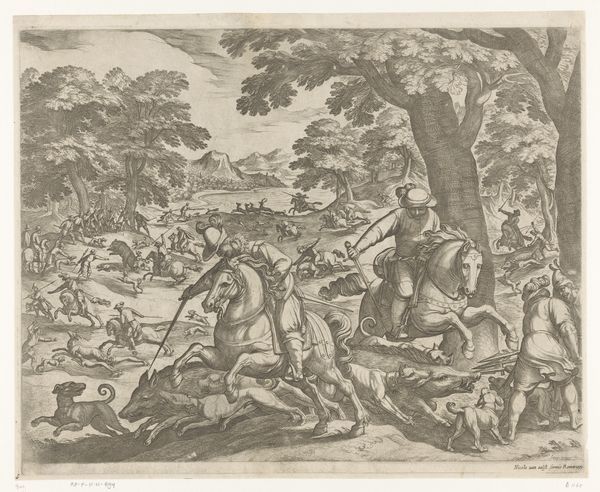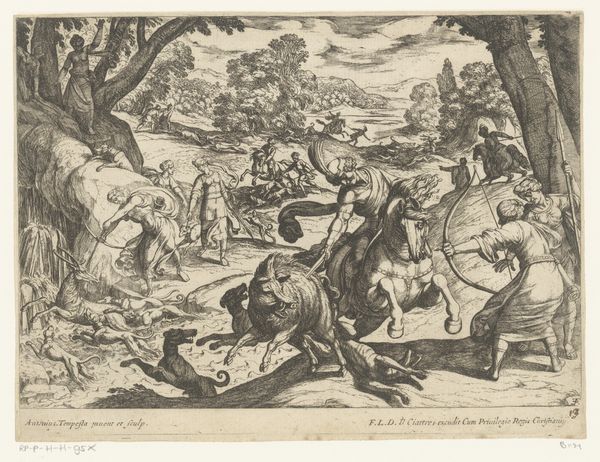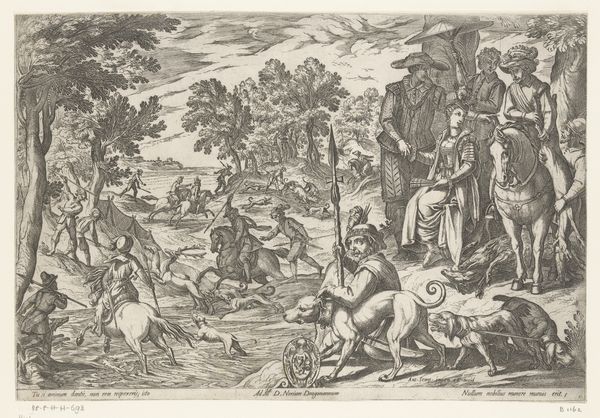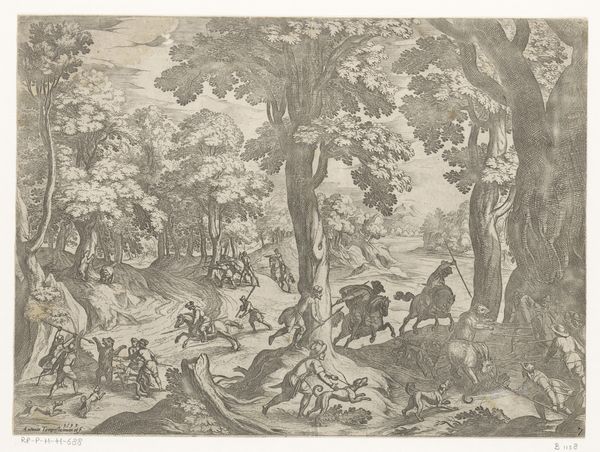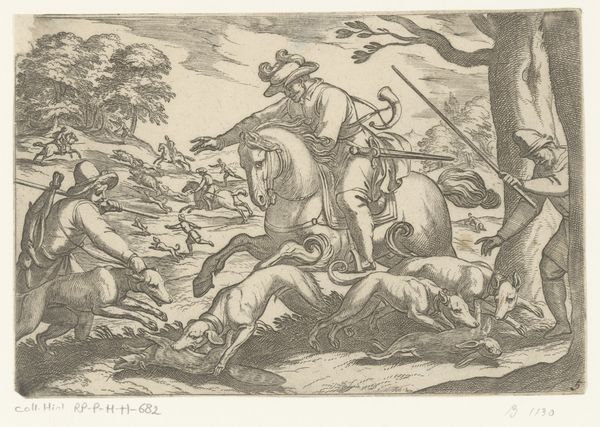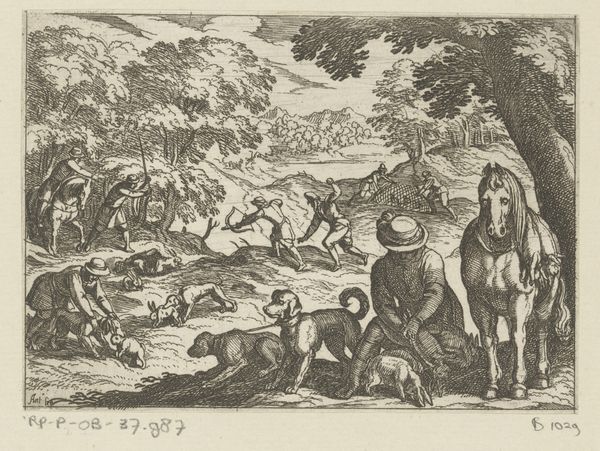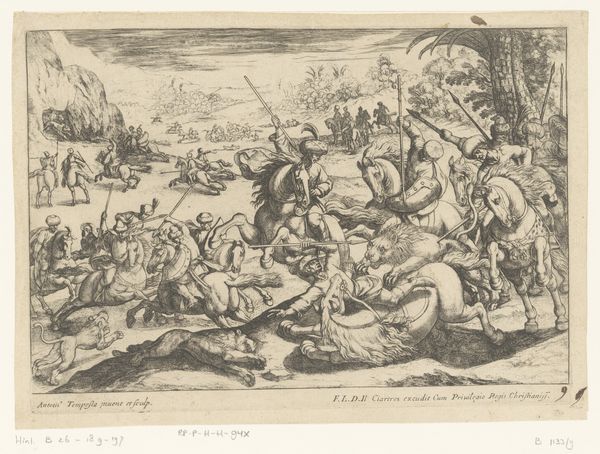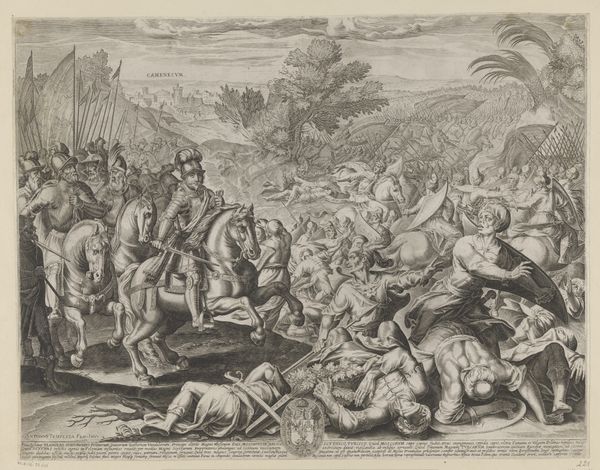
print, etching
#
action-painting
#
ink drawing
#
narrative-art
#
baroque
#
pen drawing
# print
#
etching
#
landscape
#
figuration
#
history-painting
Dimensions: height 203 mm, width 283 mm
Copyright: Rijks Museum: Open Domain
Curator: We're looking at "The Hunt for Deer and Wild Boar," an etching crafted by Antonio Tempesta, dating from 1608 to 1621. It is currently held here at the Rijksmuseum. Editor: My first impression? Overwhelming! There’s so much frenetic energy packed into this scene, a chaotic ballet of hunters, hounds, and hunted. Curator: It truly captures the Baroque fascination with dynamism. Tempesta masterfully uses line to convey movement; the swirling water, the lunging animals, even the straining muscles of the horses, it all speaks to a world in vigorous action. We observe not merely the action but its underlying structures of power. Editor: Absolutely. I see echoes of class divisions represented in the active, aristocratic hunt, contrasting with the realities of rural existence, for example. Consider also the symbolism. Is this simply sport, or a staged demonstration of dominance, projecting authority? Curator: Certainly, such stagings carried social weight. However, note Tempesta's skillful application of light and shadow, creating depth and directing our focus across the scene. Consider how the lines, the varying thickness of etching marks, shape the musculature, the garments…it's an aesthetic language. Editor: I’m compelled to view it not solely as a formal exercise, but also for its societal implications. What did the image mean to its viewers, and what were their socio-political values? How did this imagery reinforce existing hierarchies? These are valid inquiries. Curator: And I see its valid formalism in its narrative cohesion through repetitive mark making, how the eye follows these repetitions into the horizon. The landscape, not just a background, plays a vital structural role, giving definition to this drama unfolding within its space. Editor: This dialogue highlights art’s multi-faceted nature—it's neither purely formal nor purely contextual, but exists within an intertwining and reciprocal relationship. Curator: Precisely, a dance between form and the forces that mold it; an etching that allows both observation of inherent artistic properties, and those within a historical milieu.
Comments
No comments
Be the first to comment and join the conversation on the ultimate creative platform.
